In today’s fast-paced tech landscape, DevOps collaboration isn’t just a buzzword; it’s the secret sauce that turns chaos into harmony. Imagine a world where developers and operations teams work together like peanut butter and jelly—smooth, satisfying, and surprisingly effective. When these two forces unite, they can streamline processes, boost productivity, and deliver high-quality software faster than you can say “deployment.”
Table of Contents
ToggleUnderstanding DevOps Collaboration
DevOps collaboration integrates development and operations teams to streamline processes. This synergy leads to quicker software delivery and improved product quality. Teams work together, sharing insights and responsibilities, which fosters a culture of accountability.
Roles within DevOps include developers, operations staff, and quality assurance professionals. Each group contributes unique skills, enhancing overall functionality. Developers focus on writing code, while operations staff manage deployment and infrastructure. Quality assurance professionals ensure that the software meets the required standards.
Effective communication is crucial in DevOps collaboration. Tools like Slack, Jira, and Git facilitate real-time discussions and transparent tracking of progress. Regular meetings, such as stand-ups and retrospectives, enable teams to align goals and address challenges quickly.
Emphasizing automation benefits teams as well. Automated testing and continuous integration help identify issues early in the development cycle. This proactive approach reduces errors and increases efficiency, leading to faster deployments.
Metrics play a vital role in evaluating collaboration success. Key performance indicators, such as deployment frequency and lead time for changes, provide insight into team performance. Tracking these metrics allows teams to refine their processes continually and make data-driven decisions.
Adopting a DevOps culture shifts the traditional mindset from silos to teamwork. This cultural transformation encourages experimentation and innovation. Teams that embrace collaboration adapt more swiftly to changes, improving their competitive edge in the tech industry.
Importance of DevOps Collaboration
DevOps collaboration plays a crucial role in modern tech. It transforms chaotic workflows into streamlined processes, enhancing productivity and speed in software delivery.
Benefits for Organizations
Organizations experience numerous advantages from effective DevOps collaboration. Increased deployment frequency and faster time to market significantly benefit competitive positioning. High-quality software and fewer production issues lead to greater customer satisfaction and trust. Enhanced communication among team members fosters a culture of continuous improvement, resulting in innovative solutions and adaptations. Automation tools create efficiencies that allow teams to focus on strategic tasks rather than repetitive ones. Metrics from collaboration enable data-driven decision-making, further optimizing operations and driving success.
Impact on Team Dynamics
Team dynamics shift positively with DevOps collaboration. Greater integration among developers, operations staff, and quality assurance professionals enhances mutual understanding. Trust builds as clearer communication channels enable real-time feedback and problem-solving. Regular alignment meetings ensure all team members remain on the same page, which diminishes misunderstandings. Roles become more fluid, allowing team members to share knowledge and skills effectively. This synergy cultivates an environment that encourages experimentation and innovation, ultimately reinforcing a shared commitment to high-quality outcomes.
Key Principles of Effective DevOps Collaboration
Effective DevOps collaboration hinges on several key principles that foster seamless interactions between teams. Communication and the right tools play crucial roles in this transformation.
Communication Practices
Establishing clear communication channels significantly enhances DevOps collaboration. Teams benefit from daily stand-ups that promote transparency and shared understanding of goals. Regular check-ins minimize gaps in knowledge and help identify roadblocks. Utilizing feedback loops fosters continuous improvement, addressing issues before they escalate. Adopting a culture of openness encourages team members to share insights and experiences candidly. Prioritizing alignment through scheduled meetings aids in maintaining collective focus on project objectives. Ultimately, strong communication practices lead to better synergy among developers and operations staff.
Tools and Technologies
Leveraging appropriate tools enhances efficiency in DevOps environments. Platforms like Slack and Microsoft Teams facilitate instant communication, enabling quick decision-making. Jira serves as an invaluable project management tool, allowing teams to track progress and manage tasks effectively. Version control systems like Git streamline collaboration on code development. Automation tools for testing and deployment further reduce manual effort, increasing reliability. Continuous integration and continuous deployment (CI/CD) pipelines help teams release updates frequently and seamlessly. These technologies integrate smoothly into workflows, establishing a cohesive digital ecosystem that supports effective collaboration.
Challenges in DevOps Collaboration
DevOps collaboration faces several challenges that can hinder its effectiveness. Identifying and addressing these barriers is crucial for success.
Organizational Barriers
Organizational structures often create silos, separating development and operations teams. These silos lead to miscommunication and slow workflows, resulting in project delays. Additionally, differing priorities between teams can create friction. For example, developers may prioritize rapid feature delivery, while operations focus on system stability. Aligning these priorities requires commitment from leadership to foster a unified direction. Moreover, resource constraints may limit collaboration tools and training, affecting team performance. Establishing cross-functional teams helps breakdown these barriers and promotes collective ownership of projects. Integrating tools across departments can streamline processes, leading to improved efficiency and collaboration.
Cultural Resistance
Cultural resistance poses significant challenges to DevOps collaboration. Many teams may hesitate to shift from traditional methods to a collaborative culture. Long-standing practices often create reluctance to embrace new workflows or tools. Increasing transparency within teams can address this hesitation. Encouraging open communication promotes trust and buy-in from all members. Leadership support remains vital for cultivating a culture of collaboration and experimentation. Training initiatives empower team members to adapt to new roles and responsibilities. Fostering a mindset focused on continuous improvement can gradually diminish resistance. Celebrating small wins reinforces positive changes and motivates teams to embrace a collaborative approach.
Strategies for Enhancing DevOps Collaboration
Effective collaboration in DevOps hinges on well-defined strategies that promote teamwork and communication among all team members.
Best Practices
Establishing clear communication channels significantly boosts collaboration. Daily stand-ups and regular check-ins keep everyone aligned and informed. Utilizing project management tools simplifies tracking progress and managing tasks. Organizations benefit from shared documentation, which ensures that team members access the same information. Emphasizing transparency fosters trust and encourages open discussions about challenges. Teams that embrace feedback loops frequently refine their processes, leading to higher efficiency. Streamlining code collaboration through version control systems, such as Git, enhances workflows. Integrating continuous integration and delivery tools automates testing and deployment, minimizing manual effort.
Training and Development
Investing in training initiatives empowers team members to adapt to new roles and technologies. Workshops on collaboration tools offer hands-on experience, enhancing comfort among team members. Organizations that prioritize ongoing development create a culture of continuous learning, which is essential for accommodating evolving technology. Leadership commitment to training programs strengthens team dynamics and ensures everyone stays updated on best practices. Celebrating small wins during training sessions reinforces positive behaviors and fosters motivation. Fostering a mindset of experimentation encourages teams to embrace innovative solutions. Continuous development equips professionals with the skills needed to thrive in a collaborative environment.
Conclusion
DevOps collaboration stands as a cornerstone for modern software development. By fostering a culture of teamwork and open communication, organizations can break down silos and enhance efficiency. The integration of diverse skill sets from developers, operations, and quality assurance professionals leads to improved product quality and faster delivery times.
Embracing automation and effective communication tools not only streamlines processes but also cultivates an environment ripe for innovation. As teams adapt to these collaborative practices, they position themselves to respond swiftly to industry changes and customer needs. Ultimately, the commitment to a DevOps culture empowers organizations to achieve a competitive edge in the tech landscape.







